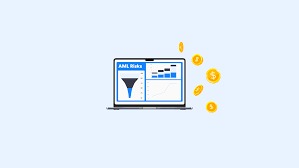As the cryptocurrency landscape continues to evolve, startups in this space face unique challenges. One of the most pressing concerns is navigating the complex web of regulatory requirements while ensuring robust risk management. With third-party providers offering various solutions, it becomes essential to assess the risks associated with external partnerships.
After all, even one misstep can lead to devastating consequences for both the startup and its stakeholders. This is where third-party risk assessments come into play. Crypto startups are often too focused on product development and scaling, but overlooking the potential risks posed by third-party vendors, partners, or service providers can be costly.
Engaging in business risk assessment services not only identifies vulnerabilities but can help enhance the long-term success of a business. So, what is the true value of a third-party risk assessment for a crypto startup? This blog will explore the hidden ROI of conducting a third-party risk assessment and why it’s a critical investment that can save both time and resources in the long run.
Why Third-Party Risk Assessments Are Crucial for Crypto Startups
Crypto startups operate in a highly regulated environment, where a single mistake could result in financial penalties or damage to their reputation. Third-party risk assessments are crucial because they identify potential threats from vendors, service providers, or partners that may introduce risk into the startup’s operations.
These risks can range from financial instability to cybersecurity vulnerabilities, which could have a direct impact on the startup’s ability to maintain operations and meet regulatory requirements. By assessing the risks associated with third parties, startups can ensure they are partnering with vendors who align with their business values and compliance standards.
How Can Third-Party Risk Impact Your Crypto Startup?
Third-party risk can have a direct impact on the operations of your crypto startup, from financial instability to security breaches. These risks often go unnoticed but can lead to serious consequences if left unchecked.
Here are some key areas where third-party risks can affect your crypto business:
- Regulatory Non-Compliance: Third-party vendors, especially those handling sensitive data, must comply with relevant regulations such as GDPR, AML (Anti-Money Laundering), and CFT (Combating the Financing of Terrorism). If your third-party vendor fails to comply with these regulations, your startup could face hefty fines or, worse, legal action.
- Security Breaches: Vendors with weak cybersecurity practices are a major risk. Hackers often target service providers to gain access to larger networks and systems. A breach in your vendor’s system could compromise your customers’ data or disrupt your business operations.
The Hidden ROI: How Risk Assessments Save Money
The ROI of third-party risk assessments goes far beyond preventing immediate threats. The financial benefits of conducting regular risk assessments can significantly outweigh the costs of conducting one. By identifying potential risks early, crypto startups can avoid the high costs associated with:
- Legal Fines: A failure to adhere to regulations due to a third party’s non-compliance can result in hefty fines. Regular risk assessments help ensure that partners and vendors maintain the necessary compliance, saving the startup from potential financial penalties.
- Reputation Damage: A security breach caused by a vendor can severely damage a startup’s reputation, leading to the loss of customers and a tarnished brand image. Third-party assessments help in selecting vendors with strong security practices, protecting your brand.
In short, the ROI comes from preventing financial loss, maintaining a healthy reputation, and ensuring compliance.
Understanding the Core Benefits of Third-Party Risk Assessments
There are several key benefits to integrating third-party risk assessments into a crypto startup’s operations. These include:
- Proactive Risk Management: Identifying potential risks early allows a startup to mitigate them before they escalate. This proactive approach reduces the chances of significant losses, both financially and operationally.
- Increased Transparency: Conducting these assessments improves the visibility of your entire supply chain. You gain a deeper understanding of where risks exist and can address them directly with your vendors.
- Risk Mitigation Strategies: A third-party risk assessment can identify vulnerabilities in your vendor relationships and recommend actionable solutions to mitigate these risks. Whether it’s enhancing cybersecurity protocols or improving regulatory compliance, these strategies are essential for keeping your startup safe from the unpredictable crypto landscape.
- Building Stronger Vendor Relationships: With regular risk assessments, you’re not only safeguarding your business; you’re also fostering stronger, more transparent relationships with your partners. Vendors who know you’re actively monitoring their performance and compliance are more likely to maintain high standards, contributing to better business operations.
How to Conduct an Effective Third-Party Risk Assessment
It’s one thing to conduct a risk assessment, but it’s another to do it effectively. Here’s a step-by-step approach to ensure you’re getting the most out of your risk assessment efforts:
- Identify Critical Vendors: Not all vendors pose the same level of risk. Focus on those that provide critical services, such as payment processors, security providers, or data management services.
- Evaluate Compliance and Security Protocols: Ensure your vendors are adhering to relevant regulatory standards, such as AML, GDPR, and KYC (Know Your Customer). Evaluate their cybersecurity measures to ensure they can handle data protection properly.
- Review Financial Stability: Evaluate the financial health of your partners. A vendor in financial distress may pose risks that can directly impact your operations.
- Monitor Continuously: Risk assessment isn’t a one-off activity. Regular monitoring ensures that new risks are identified and mitigated in real-time.
By following these steps, you can ensure a thorough and effective risk management process for your crypto startup.
A Hidden Advantage: Gaining Investor Confidence
Crypto startups often seek funding from venture capitalists, angel investors, or institutional investors. One way to stand out in a crowded market is by demonstrating that you’ve taken steps to protect your business from third-party risks. Investors are more likely to trust startups that have a proactive risk management strategy in place, as it shows foresight and business maturity.
A well-documented third-party risk management program can be a powerful tool for attracting investors and securing funding. When investors see that a startup has a structured approach to mitigating risks, they’ll feel more confident in the long-term viability of the business.
Conclusion
While the immediate focus for crypto startups may be on scaling their technology, customer acquisition, and meeting regulatory demands, the underlying risk posed by third-party vendors should not be overlooked. Third-party risk assessments serve as a vital tool in maintaining the security, compliance, and operational integrity of your business.
By understanding the hidden ROI, such as preventing financial penalties, securing data, and enhancing investor trust, startups can make more informed decisions. Proactively managing third-party risks will help you build a more resilient business, ensuring that you stay ahead of potential challenges in this fast-paced industry.
Incorporating these assessments into your risk management strategy isn’t just about compliance; it’s about ensuring the long-term health and success of your startup. Are you ready to protect your business from unforeseen risks?

